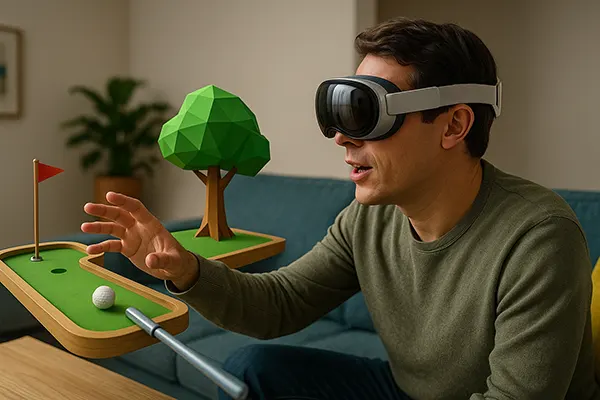
Apple Vision Pro for Gamers: How Virtual Reality Is Evolving in 2025
In 2025, Apple Vision Pro is reshaping how video games are perceived and experienced. While originally conceived as a mixed-reality device aimed at professional tasks and multimedia, it is increasingly being recognised as a competitive tool in the gaming sphere. With significant advancements in display quality, performance, and ecosystem integration, Vision Pro opens a new chapter in immersive gameplay. This article explores how the gaming experience has changed for Vision Pro users, from interface enhancements to new modes of interaction, and what it means for the future of virtual reality.
Immersive Technology That Pushes Boundaries
The hardware of Apple Vision Pro is unmatched in its class. Gamers now benefit from ultra-high-resolution micro-OLED displays delivering over 23 million pixels across both eyes, surpassing 4K per eye. This results in hyper-detailed game environments, where textures, lighting, and movement feel incredibly lifelike. Coupled with low-latency eye and hand tracking, gamers gain seamless interaction with virtual elements, without needing external controllers.
The M2 chip combined with the R1 co-processor ensures swift data processing for both 2D and 3D environments. Even graphics-intensive VR titles such as “No Man’s Sky” or the newly optimised “Resident Evil 4 VR” run smoothly with no perceptible lag. This stable and visually-rich environment greatly enhances user comfort during long sessions.
What also sets Vision Pro apart is its spatial audio. Through dynamic head tracking and personalised sound profiles, the system recreates 360-degree sound environments that match the visuals precisely. For gamers, this means greater immersion, whether in a stealth mission or high-octane racing sequence.
Enhanced Accessibility for New Users
Apple Vision Pro addresses many of the traditional onboarding issues VR systems face. Setup is intuitive and doesn’t require a dedicated gaming PC or complex adjustments. Thanks to the integrated visionOS and compatibility with existing Apple ID accounts, even non-technical users can install and launch VR games within minutes.
App Store integration provides a curated list of compatible titles. Apple Arcade, now supporting spatial games, offers a subscription-based approach to access VR-native games alongside traditional touch-based titles adapted for immersive environments. Examples include “Jetpack Joyride VR” and puzzle games optimised for gesture control.
For players with physical limitations or accessibility needs, Vision Pro’s adaptive features such as voice navigation, eye tracking, and custom interaction profiles create inclusive gameplay options. This positions Vision Pro not just as a technological innovation, but as a user-friendly device for all player levels.
New Genres and Interactions in the Vision Pro Ecosystem
Developers have started reimagining classic genres for spatial gameplay. VR sports games, flight simulators, and survival experiences are at the forefront of this evolution. “Ace Combat: Vision Skies” and “Survive the Horizon” are among titles now pushing full-body tracking and environmental physics for realism unseen in traditional gaming setups.
Another innovation comes in hybrid gameplay. Many games now support both augmented reality (AR) and virtual reality (VR) modes. A strategy game, for example, can be played on a virtual table projected onto a real-world surface, or shifted into a fully enclosed battlefield. This flexibility gives players more control over their preferred style of immersion.
Hand-tracking allows for direct manipulation of in-game elements. In crafting games, players can rotate, combine, or dismantle items just by moving their fingers. This bypasses the abstraction of button-mapping and enhances connection to the gameplay experience.
Cross-Platform Integration and Cloud Play
Apple Vision Pro is no longer just an isolated headset—it now functions as part of a wider gaming ecosystem. With macOS and iOS integration, users can stream games from their MacBook directly into Vision Pro’s immersive display. Services such as Xbox Cloud Gaming and Nvidia GeForce NOW are now natively supported via Safari, enabling AAA gameplay on-demand.
Cross-device syncing lets players move from iPhone to Vision Pro without data loss or disruption. For instance, a save file from a 2D game on iPhone can be resumed in an AR-enhanced mode on Vision Pro, complete with added spatial elements and richer controls.
Bluetooth support for gaming controllers also expands input options. This makes Vision Pro viable for both casual mobile-style gaming and serious controller-based gameplay, further positioning it as a multi-genre, multi-purpose device in 2025.
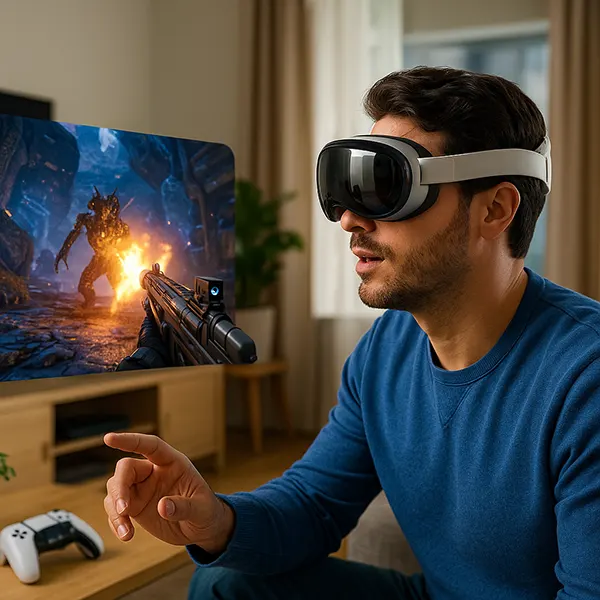
What to Expect Beyond 2025
While current iterations already demonstrate incredible capabilities, Apple is investing heavily into the Vision Pro ecosystem’s future. Upcoming developer kits indicate support for generative AI NPCs and dynamic procedural world-building within VR. These advancements aim to reduce repetitiveness and create more responsive in-game narratives.
In the multiplayer space, Vision Pro is expected to introduce avatar mirroring with improved body-tracking fidelity. This will elevate social VR games and co-op gameplay, making virtual interactions feel more authentic and expressive. Games like “Echo Hunt VR” are already testing these systems in limited beta environments.
On the hardware side, rumours suggest a lighter, second-generation Vision Pro may arrive in late 2025, making prolonged gaming more comfortable. Coupled with expanded third-party accessory support, the headset is poised to become a more customisable and competitive option in the gaming device market.
The Bottom Line for Gamers
Apple Vision Pro in 2025 is not just a productivity tool—it has earned its place as a premium device for immersive gaming. Its visual clarity, precise tracking, and cross-platform support make it suitable for both casual and advanced gamers. The combination of hardware innovation and software diversity ensures that the device remains at the forefront of virtual reality trends.
Moreover, Apple’s focus on accessibility and hybrid experiences widens its appeal beyond early adopters. As Vision Pro becomes more integrated into mainstream gaming culture, it’s likely to influence how developers approach interaction design and storytelling for years to come.
Gamers seeking an advanced, reliable, and ever-evolving VR experience will find Apple Vision Pro to be a serious contender. With its current trajectory, the line between traditional gaming and immersive simulation continues to blur, and Apple appears determined to lead that transformation.
Related articles
-
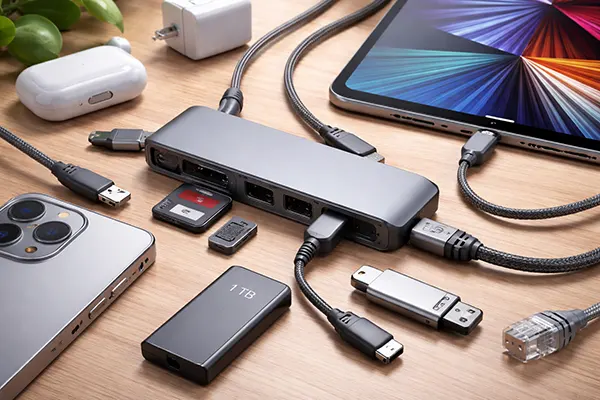 USB-C ecosystem for iPhone and iPad: ...
USB-C ecosystem for iPhone and iPad: ...USB-C on iPhone and iPad has made everyday setups simpler, …
-
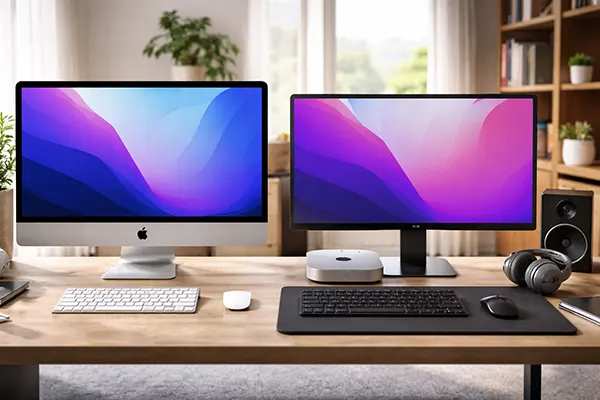 iMac vs Mac mini: Which Is Better for...
iMac vs Mac mini: Which Is Better for...Choosing a Mac for a home office in 2025 is …
-
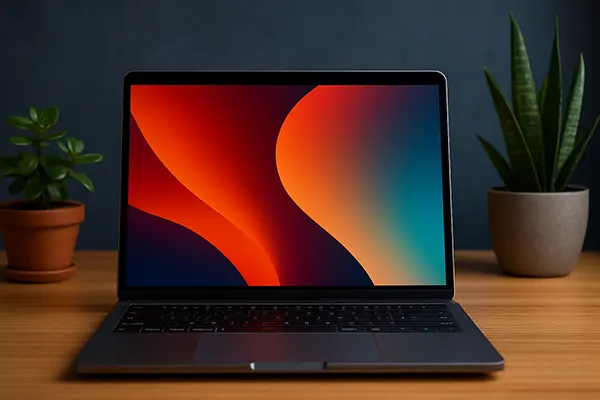 MacBook 2025: Real Changes Brought by...
MacBook 2025: Real Changes Brought by...The 2025 MacBook generation marks a significant stage in Apple’s …
